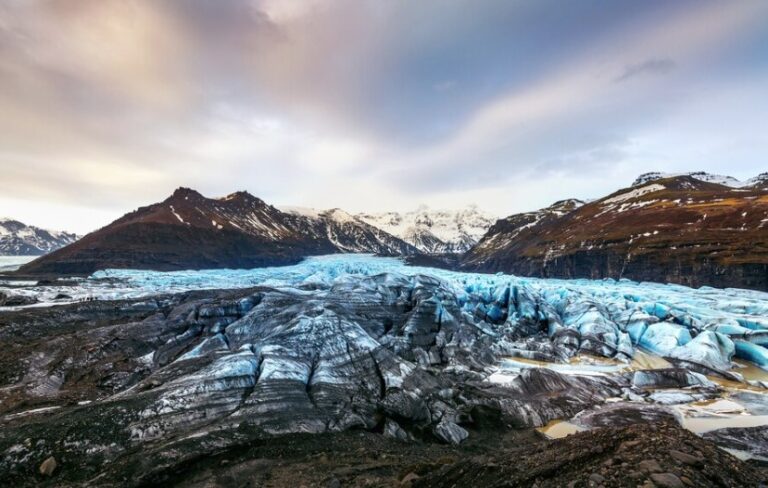Set amidst the majestic Rocky Mountains, Glacier National Park is a breathtaking natural wonder that beckons outdoor enthusiasts and nature lovers alike. With towering peaks, pristine lakes, and abundant wildlife, this park offers an unforgettable experience. If you’re planning a visit in 2024, here are the 10 best times to explore the wonders of Glacier National Park:
Spring (April – May)
As winter’s grip loosens, Glacier National Park awakens from its slumber. The landscape transforms into a vibrant tapestry of wildflowers, including glacier lilies, Indian paintbrush, and lupine. Wildlife emerges from hibernation, and you may encounter bears, moose, and bighorn sheep along the trails.
Pros:
- Fewer crowds
- Abundant wildflowers
- Wildlife viewing opportunities
Cons:
- Some trails may be snow-covered
- Weather can be unpredictable
Early Summer (June – July)
Summer arrives in Glacier National Park, bringing warmer temperatures and longer days. The park’s lakes thaw, revealing stunning turquoise hues. Hiking trails open fully, offering access to backcountry wilderness and panoramic views.
Pros:
- Ideal weather for hiking and camping
- Lakes accessible by boat and kayak
- Wildlife sightings common
Cons:
- Peak tourist season
- Reservations for accommodations and activities are essential
Late Summer (August – September)
As summer transitions into fall, the crowds begin to dwindle. The park’s vegetation takes on hues of gold and amber, creating a breathtaking spectacle. Wildlife remains active, and you may encounter elk, deer, and grizzly bears foraging in the meadows.
Pros:
- Fewer crowds
- Exceptional fall foliage
- Wildlife viewing continues
Cons:
- Weather can be unpredictable
- Some trails may close due to snowfall
Golden October
The month of October offers one of the most magical experiences in Glacier National Park. The aspen trees transform into a fiery gold, contrasting beautifully with the evergreens. The crisp autumn air adds an energizing element to hikes along the scenic trails.
Pros:
- Stunning fall foliage
- Fewer crowds
- Wildlife sightings still possible
Cons:
- Weather can be cold
- Some park facilities may close
Fall Transitions (November – Mid-December)
As winter approaches, Glacier National Park undergoes a stunning transformation. The landscape becomes blanketed in snow, creating a surreal and enchanting winter wonderland. While most roads and facilities close, snowshoeing and cross-country skiing offer unique ways to explore the park.
Pros:
- Winter wonderland scenery
- Solitude and tranquility
- Opportunities for snowshoeing and cross-country skiing
Cons:
- Cold temperatures
- Most facilities closed
- Limited access to the park
Winter Solstice (Mid-December – Late January)
The shortest day of the year, the winter solstice marks the beginning of astronomical winter in Glacier National Park. The park’s rugged beauty takes on a new dimension under the soft glow of the moon and stars. Guided snowshoeing and ranger-led programs offer opportunities to learn about the park’s winter ecology.
Pros:
- Unique winter wonderland experience
- Opportunities for snowshoeing and stargazing
- Ranger-led programs provide insights into park’s winter life
Cons:
- Extremely cold temperatures
- Access to the park is limited
- Facilities and services are closed
Late Winter (February – March)
As the days lengthen, the snowpack in Glacier National Park gradually diminishes. Wildlife emerges from their dens, eager to explore the awakening park. Cross-country skiing and snowshoeing remain excellent options for exploring the backcountry, as the trails are less crowded and the scenery is equally breathtaking.
Pros:
- Increased wildlife activity
- Solitude and tranquility
- Cross-country skiing and snowshoeing opportunities
Cons:
- Cold temperatures persist
- Some facilities may still be closed
Cultural Immersion
Glacier National Park is not only a natural wonder but also a place of rich cultural heritage. The Blackfeet Nation, the indigenous people of the region, have a deep connection to the park’s lands and waters. Visitors can learn about their culture through guided tours, cultural demonstrations, and exhibits.
Transportation
Glacier National Park is accessible by car, train, or plane. The nearest major airport is Glacier Park International Airport (FCA). Amtrak’s Empire Builder train line also serves the park, with stops in East Glacier Park and West Glacier.
Accommodation Options
Glacier National Park offers a range of accommodation options, including lodges, motels, and campgrounds. The historic Many Glacier Hotel, located within the park, provides a unique and unforgettable stay. Other popular options include the Lake McDonald Lodge and the St. Mary Lodge.
Conclusion
From the vibrant wildflowers of spring to the enchanting winter wonderland, Glacier National Park offers an unforgettable experience throughout the year. By choosing the best time to visit in 2024 based on your interests and preferences, you can immerse yourself in the park’s natural beauty, cultural heritage, and abundant wildlife. Plan your trip carefully and prepare to create lasting memories in this breathtaking wilderness.
